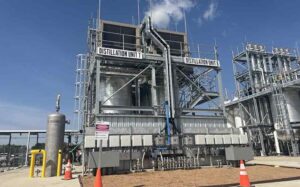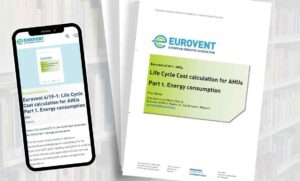No R22? Are service blends a viable option?
18th November 2013The days of R22 are numbered. The EU faces a total ban by January 1, 2015. For the rest of the world, under the Montreal Protocol, only recovered and recycled R22 will be allowed after 2020. So what are the options?

The use of refrigeration and air conditioning systems in the European Union is mainly influenced by two regulations: EC 1005/2009 on ozone-depleting substances and EC 842/2006, commonly known as the F-gas regulations, which is currently being revised.
In Europe, the use of virgin R22 for servicing and maintenance of refrigeration and air conditioning systems has been banned since January 1, 2010, and currently only reclaimed or recycled refrigerant may be used for these purposes. From 1 January 2015, the ban will be extended to include the use of reclaimed and recycled HCFC. This means that it will be still allowed to operate existing equipment that contains HCFC beyond this phase-out date, but there must be no maintenance or servicing undertaken that involves topping up or refilling.
Although many companies and institutions have undergone or are in the process of R22 replacement, there are still a lot of systems running on this refrigerant. For sectors relying on air conditioning and refrigeration for their daily business such as the food and drink industry, supermarkets, pharmaceuticals, general manufacturing and data processing, shutdown of acr equipment could have very serious consequences.
Whether in Europe or elsewhere, all will eventually be affected by the decreasing availability or non-availability of R22.
Without doubt, the best, most energy efficient option is to replace the system with new equipment running on an alternative environmentally-acceptable alternative but that is not always financially possible or logistically feasible in the time allowed. In those instances so-called retrofit refrigerants can offer a means to extend the life of current R22 equipment. It is important to stress that these are not “drop-in” solutions – the conversion will normally involve a number of changes to the system and equipment, may lead to a drop in system performance and manufacturers may not endorse the use of these refrigerants.
The latest Bitzer refrigerant report, a good source of reference on these matters, points out that none of these substitutes can replace R22 in all respects. Differences in refrigeration capacity, differing pressure levels special requirements in system design and restrictions on possible applications will all impact on choice.
Service blends
There are a number of these retrofit or service blends available from the main refrigerant manufacturers. Most contain varying compositions of R32, R125, R134a, R143a and R600a.
R422D and R438A are said to be most suitable as replacements for R22 in existing DX water chiller systems, residential, commercial air conditioning and medium/low temperature refrigeration systems.
It is worth establishing that neither of these two refrigerants would be classed as low GWP. R422D has a GWP of 2729 and the GWP of 438A is 2264 – both higher than R22’s GWP of 1810. In Europe, the Commission is currently negotiating a revision to the F-gas regulations and, depending on the outcome, both refrigerants could fall within the upper GWP limit like R404A. For those refrigerants above the upper limit it is proposed that there should be a service ban on systems using over 5 tonnes of CO2 equivalent of refrigerant. Environmental groups are pushing for 2500 as the upper limit, industry and others are looking at 2150.
DuPont brands R422D as Isceon MO29 and R438A as Isceon MO99. They form part of DuPont’s 9 Series refrigerants.
DuPont says that they provide similar cooling capacity and energy efficiency to R22 in most systems, while operating at significantly lower compressor discharge temperature. In many cases they are compatible with traditional and new lubricants (including mineral oil, alkylbenzene and polyol ester) and require only minor adjustments of system parameters.
Tests conducted by DuPont have shown that R438A can have advantages over R422D where the expansion device is closely sized to the capacity of the system. In some applications, says DuPont, it is necessary to change the orifice or even the complete expansion valve to a larger capacity type with R422D. According to DuPont, the use of R438A avoids this and therefore provides a solution requiring the absolute minimum of system changes.
Retrofit procedure
DuPont maintains that the conversion can be carried out during a relatively short period minimising system downtime. In many cases, the work can even be carried out during normal business operations. The retrofit requires eight basic steps which are described in detail in the Retrofit Guidelines available from DuPont (www.isceon.com/uk):
1. Establish baseline performance with existing refrigerant.
2. Remove all the old (R22 or other) refrigerant from the system into a recovery cylinder. Weigh the amount removed.
3. Replace the filter drier and critical elastomeric seals/gaskets.
4. Evacuate system and check for leaks.
5. Charge with the new R438A or R422D refrigerant. The initial charge amount should be approximately 85% of the standard charge for R22. The final charge amount will be approximately 95%.
6. Start up system, adjust TXV and/or charge size to achieve optimum superheat.
7. Monitor oil levels in compressor. Add oil as required to maintain proper levels
8. Label system showing the refrigerant (and any replacement lubricant) used. Update system log-book.
Changing the elastomeric seals is vitally important as this DuPont video graphically illustrates:









